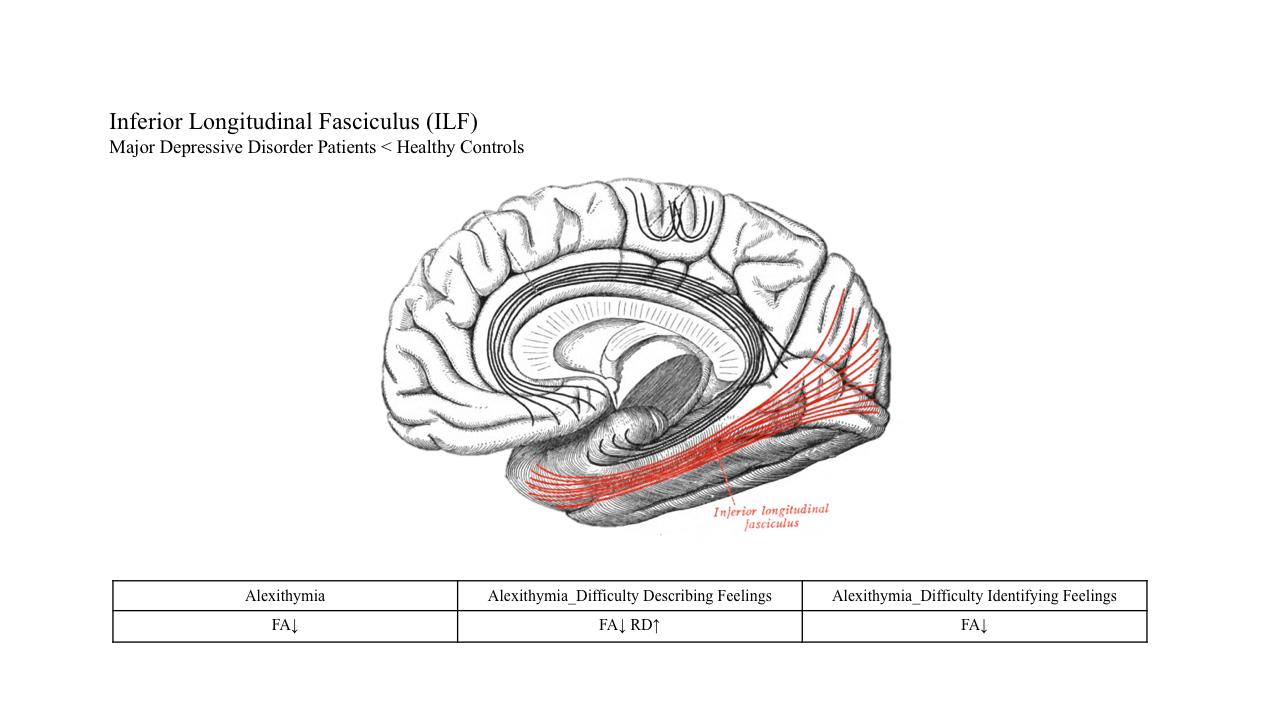Articles
Article Tools
Stats or Metrics
Article
Short Communication
Exp Neurobiol 2022; 31(5): 343-352
Published online October 31, 2022
https://doi.org/10.5607/en22030
© The Korean Society for Brain and Neural Sciences
The Association of White Matter Tracts with Alexithymia among Individuals with Major Depressive Disorder
Youbin Kang1, Aram Kim1, Wooyoung Kang1, Kyu-Man Han2 and Byoungjoo Ham2*
1Department of Biomedical Sciences, Korea University College of Medicine, Seoul 02841,
2Department of Psychiatry, Korea University Anam Hospital, Korea University College of Medicine, Seoul 02841, Korea
Correspondence to: *To whom correspondence should be addressed.
TEL: 82-2-2920-6843, FAX: 82-2-2927-2836
e-mail: hambj@korea.ac.kr
This is an Open Access article distributed under the terms of the Creative Commons Attribution Non-Commercial License (http://creativecommons.org/licenses/by-nc/4.0) which permits unrestricted non-commercial use, distribution, and reproduction in any medium, provided the original work is properly cited.
Abstract
Alexithymia is characterized by impairments in the processing of emotions. Although the disruptions in the white matter (WM) integrity in Major depressive disorder (MDD) has frequently been reported, the underlying relationship with alexithymia remains unclear. In the present study, we investigated WM tracts with Tracts Constrained by UnderLying Anatomy approach to discover potential associations between alexithymia and WM integrity to identify the neural basis of impaired emotional self-awareness in MDD. 101 patients with MDD and 99 healthy sex- and age-matched individuals underwent diffusion-weighted imaging. All participants were assessed with the 20-item Toronto Alexithymia Scale (TAS). TAS scores were significantly higher in MDD patients than in controls. Patients with MDD exhibited significantly lower FA values in the left inferior longitudinal fasciculus and it also showed negative associations with TAS. These results contribute to the neurobiological evidence on the association between MDD and alexithymia. Additionally, they suggest that reduced white matter integrity in the regions constitutes a principal pathophysiology underlying impaired emotional recognition and description in MDD.
Graphical Abstract

Keywords: Alexithymia, TAS-20, White matter, Inferior longitudinal fasciculus, Superior longitudinal fasciculus, Probabilistic tractography


